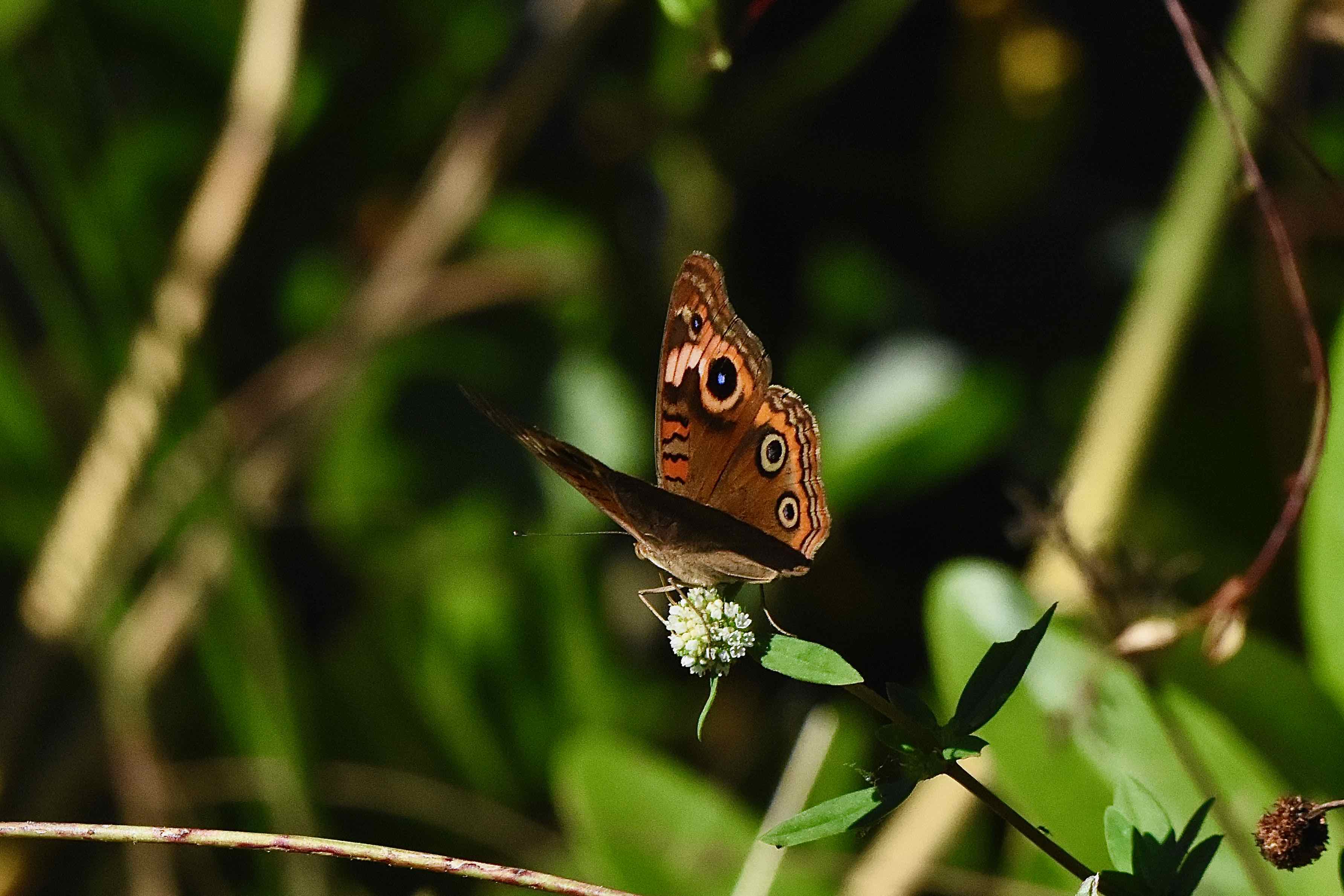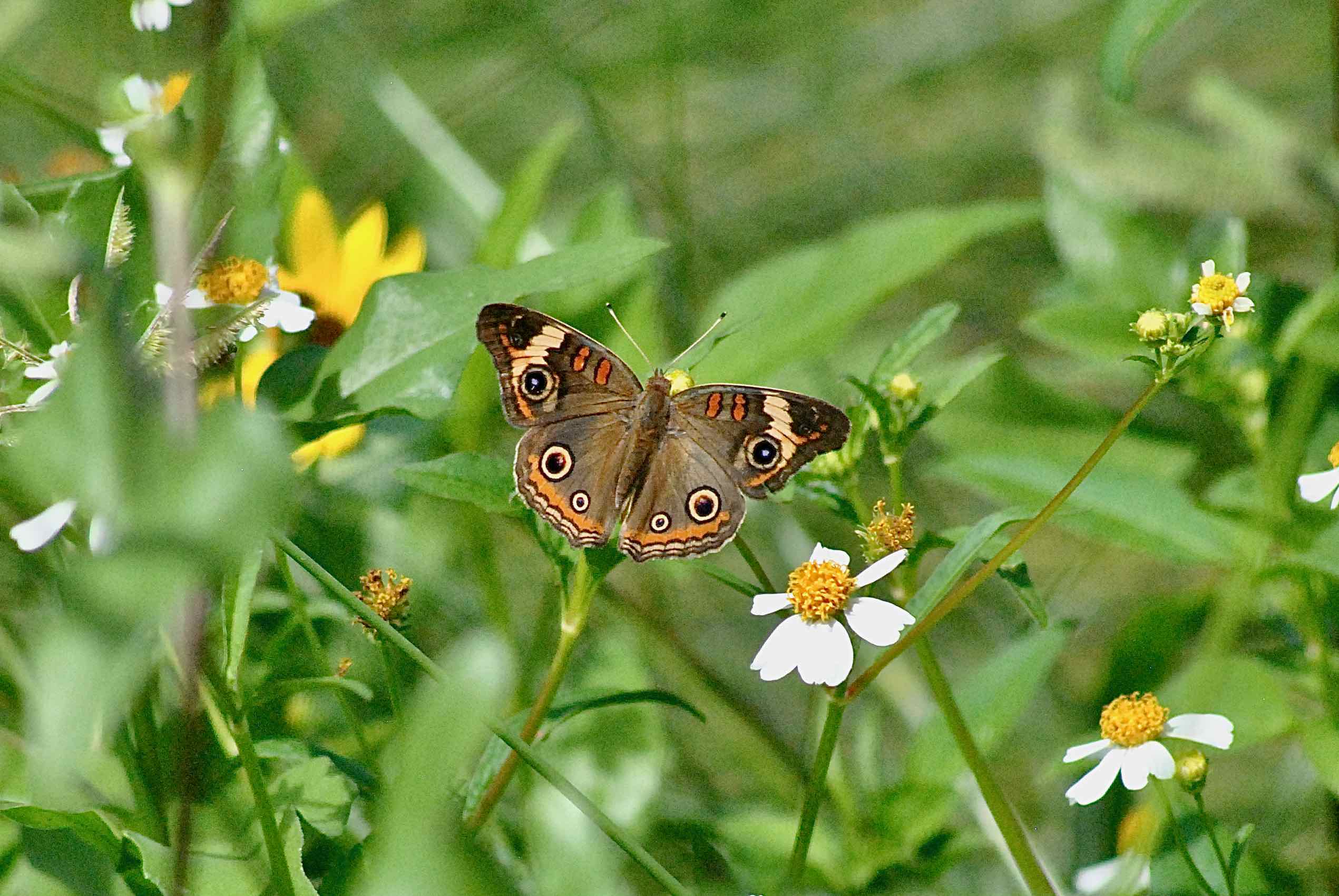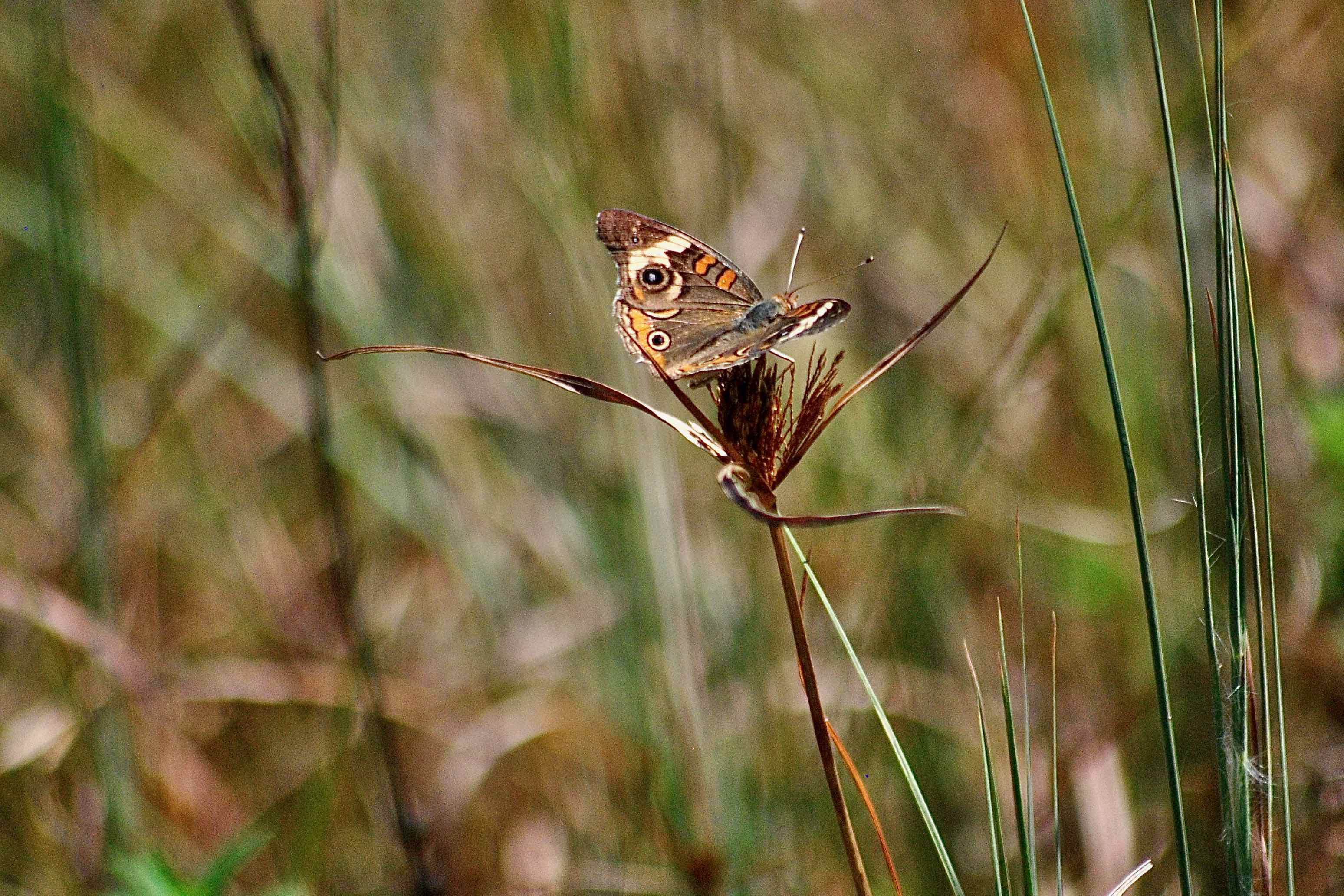
Common buckeye butterfly, photographed at J.N. "Ding" Darling National Wildlife Refuge, Sanibel, Lee County, in October 2016.
There are many methods creatures employ to avoid becoming dinner for their enemies. Some out-quick them. Some try to out-fierce them. Others try to hide or blend in. Some show off using bright colors to alert those might see them as an easy feast that their bodies are toxic and eating them isn't a good idea.
The common buckeye, Junonia coenia, uses another approach. It tries to fool would-be predators into thinking that it's bigger than it really is, something too big to mess with, using those large eyespots on its wings.
Not a bad strategy for a butterfly that makes its living in open fields where there aren't many places to hide. And apparently it's a successful one, given how common the common buckeye really is.
Those eyespots are also the inspiration for its common name, as you might guess.
Common buckeyes are found in all of the Sunshine State's 67 counties. Come fall, the population gets a big boost as common buckeyes who have spent summer up north head to the warmth of the Peninsula.
They're found throughout most of the eastern United States and even, occasionally, into southern Canada. Their range extends as far west southeastern South Dakota, Kansas and Texas. There are populations in California and Oregon, Nevada, Colorado, Arizona and New Mexico. Bermuda, parts of the Caribbean and most of Mexico.
They're middling in size, with a wingspan between an inch and a half and three inches. Females are slightly larger than males, but both sexes share the same colors and patterns. They're mostly brown with two eyespots, one large, one small, on each wing. Each forewing has two orange bars near the leading edge. Each hindwing has an orange or brown line running along the rear edge. The underside can vary according to the season, tan in summer, a rich red in fall and winter.
Common buckeyes favor a variety of open, sunny habitats, particularly with low-growing vegetation. They're take to fields, fallow agricultural lands, scrubs, roadsides, utility rights of way, savannas, along beaches, the edges of forests, even parks and gardens.
Common buckeyes are not finicky at all about the species they'll use as host plants. The list for the common buckeye includes American bluehearts, fogfruit, plantain (the weed, not the banana), false foxgloves and Florida toadflax. Females will lay a single green egg (no ham) on the leaves of the host, where their offspring will spend their first few days munching away until they mature into pupae. The butterfly produces at least three generations during the year.
Common buckeyes migrate northward during the warmer months, then starting in late summer, they begin to hightail it to Florida for the winter. Florida's resident population is active year round.
It should be noted that the common buckeye has a cousin known as the mangrove buckeye that's also found in much of Florida. It's mostly found in coastal areas, since the larvae of this buckeye use mangroves as their host. The two are similar in looks, and it's easy to maistake one for the other.
Just to be clear, the common buckeye is not in any way affiliated with the Ohio State University, not that there is anything necessarily wrong with being affiliated with, uh, OSU.
Common buckeyes are also known as the buckeye butterfly and brush-footed butterfly. It is a member of Nymphalidae, the brush-foot family.
J.N. "Ding" Darling National Wildlife Refuge



